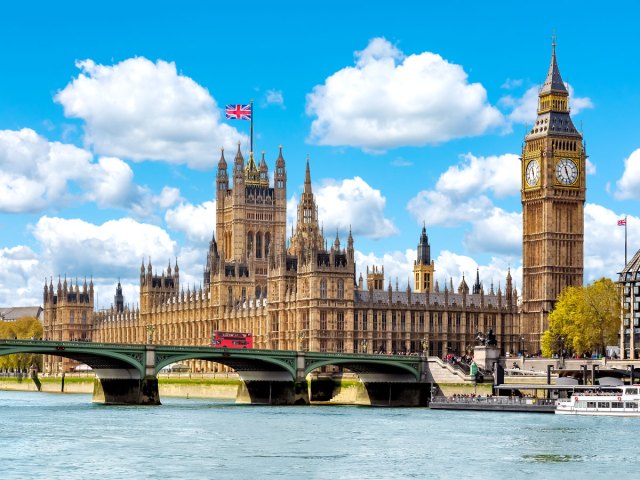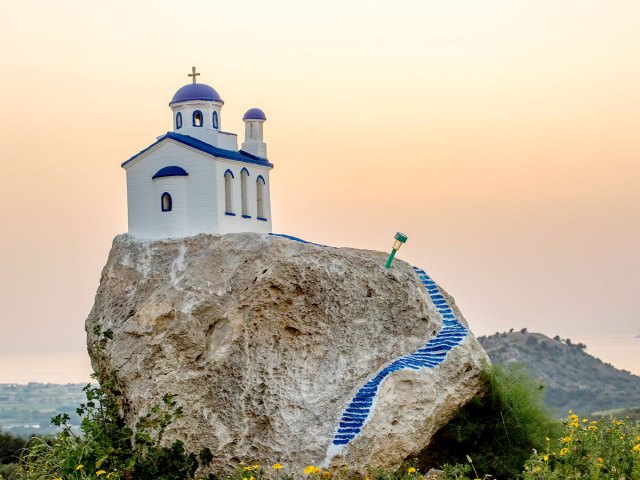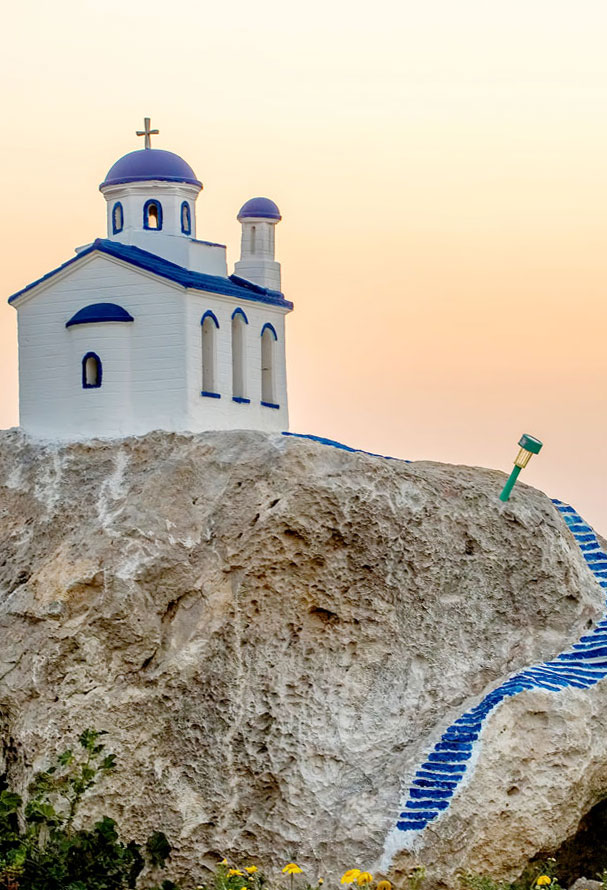Flags are a proud symbol of national identity. Their vibrant palettes and intricate designs often possess a deep cultural meaning. For example, the distinct panels of the many tricolor flags around the world have historic and religious ties, while emblems such as Canada’s red maple leaf correspond to a country’s economy and natural beauty. The backstories behind some national flags may be more straightforward, but the design of others may be slightly more ambiguous without a helpful explainer. Below, discover the hidden meanings behind eight national flags.
Nepal

The flag of Nepal is the only national flag with a non-quadrilateral shape, with two triangular pennants stacked atop one another. The dual triangles not only represent the pointed peaks of Nepal’s sacred Himalayan mountains, but also the country’s two primary religions: Hinduism and Buddhism.
The coloring of Nepal’s flag features a deep red interior surrounded by a blue border. The red represents the color of the country’s national flower, the rhododendron, as well as the fierce resolve of its people as well as victory in war — in contrast to the blue border, which is the color of peace. The Nepalese flag also features a white moon emitting eight rays and a white sun emitting 12 rays. These symbols have connections to past Nepalese dynasties, and they express hope that the country will last as long as those celestial bodies.
Brazil

The Brazilian flag features a green border containing a yellow diamond, which itself contains a blue circle adorned with white stars. The green and yellow represent past regional dynasties — the green denotes the House of Bragança, which ruled over Brazil from 1822 to 1889, while the yellow honors the European House of Habsburg. It’s said that Brazilian emperor Pedro I’s wife — a descendant of the Habsburgs — suggested the yellow color to honor her heritage.
Meanwhile, the flag’s blue circle and its stars symbolize the constellations of the Southern Hemisphere as seen from Rio de Janeiro on November 15, 1889 — the day that Brazil became a republic. Those 27 stars also represent the individual states of Brazil. Lastly, the blue orb is adorned with the slogan Ordem e Progresso, which translates to “Order and Progress,” the foundational elements of Latin American democracy.
Mexico

The Mexican flag features a tricolor design of green, white, and red panels. The green symbolizes Mexican independence, the white represents the Roman Catholic religion, and the red denotes Mexican unity. These are the three basic principles established as part of the “Three Guarantees” of Iguala, an agreement that allowed Mexico to gain freedom from Spain in 1821.
The flag of Mexico also features an intricately designed emblem at its center. It showcases an eagle with a snake in its beak standing over a cactus, reflecting the rich culture of the Aztec peoples who once inhabited the region. The design is said to represent a vision that the Aztec founders of the ancient city of Tenochtitlan saw back in 1325.
Malaysia

The Malaysian flag is similar to that of the United States, containing 14 red and white horizontal stripes. Thirteen of those stripes represent the individual states of Malaysia, whereas the fourteenth stripe honors the Malaysian government as a whole. The flag also features a blue square in its upper left corner, which is meant to reflect the unity of the Malaysian people. Inside that square are a yellow crescent moon and a 14-pointed star. Yellow is considered the color of royalty in Malaysia, and the coloring of the flag pays homage to past Malay rulers. The shapes themselves are reflective of Islam, the country’s official religion.
United Kingdom

The flag of the United Kingdom is one of the world’s most recognizable national emblems, but many people might not know the meaning behind its design. Nicknamed the “Union Jack,” the U.K. flag consists of three heraldic crosses overlaid atop one another. These joint crosses are meant to convey the unification of separate nations under one kingdom in 1707.
The red cross represents St. George, the patron saint of England, and includes both the countries of England and Wales. The patron saint of Scotland, St. Andrew, is represented by the color blue and a white “X.” Lastly, St. Patrick, the patron saint of Ireland, is represented by a red “X.” All three of these distinct crosses combine to form the tricolor British flag.
South Africa

The South African flag contains six colors, making it one of the world’s most colorful flags. The black, green, and gold colors are shared with the banner of the African National Congress, while the remaining three colors were inspired by the flag of the South African province of Transvaal.
South Africa’s national flag was adopted in 1994 to commemorate the country’s post-Apartheid era. The government made it clear that no individual group is represented by any one color. Instead, the colors serve a more abstract purpose to signify the harmony of different racial groups without calling out any specific ones in particular. The shape of the flag’s design, however, does have a specific meaning — its Y-shape symbolizes converging paths and the merging of the country’s history with its present.
Greece

Greece’s national flag features only two colors: blue and white, which are the country’s national colors. The blue symbolizes the Greek skies, whereas the white honors the purity of the Greek quest for independence. The design of the flag also holds significance. A white cross in the upper left corner pays homage to the country’s Eastern Orthodox religion. The nine alternating blue and white stripes represent the total number of syllables in the country’s national motto, “Freedom or Death,” as written in the Greek language.
India

First proposed in 1921, the Indian flag initially had deep religious meaning, incorporating the colors of the Hindu and Muslim peoples to form a two-color flag that was bisected horizontally. But after reviewing the proposal, independence leader Mahatma Gandhi suggested adding a third white horizontal line in the center. This additional white line represented the diversity of the country’s various religious communities.
However, upon official adoption of the flag, all religious meaning was stripped away. Instead, the colors were reattributed to represent bravery, harmony, and faith. The national flag of India also features a blue wheel with 24 spokes at its center known as the Ashoka Chakra. The spokes of this “wheel of time” represent the principles of life and also reflect each hour of the day.
More from our network
Daily Passport is part of Optimism, which publishes content that uplifts, informs, and inspires.























